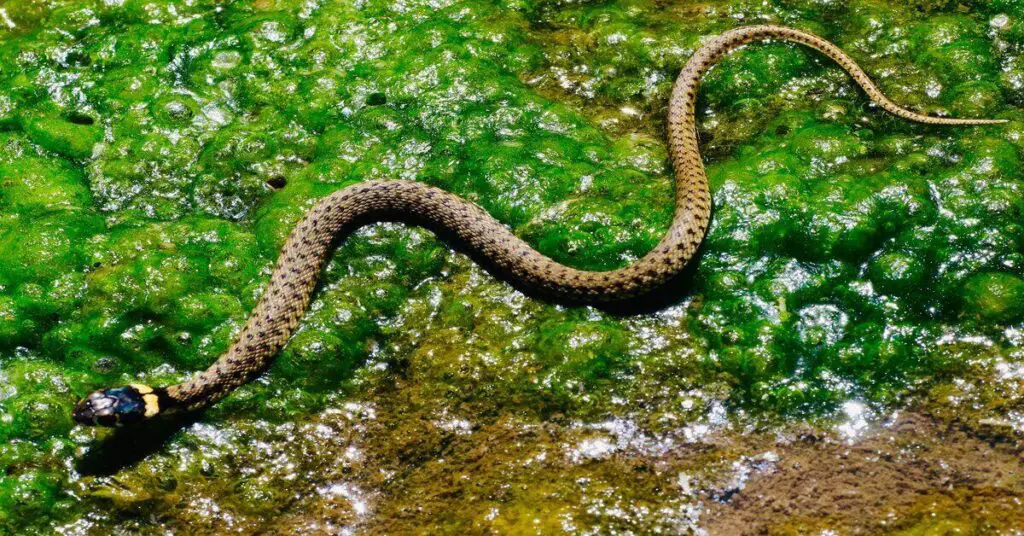Many people cower in fear when they come across a snake when hiking. When this happens, many people will either scamper for safety or try to kill the snake. Chances of encountering these reptiles out in the wilderness are high. So, you need to be prepared. In this article, we are going to talk about how to avoid snakes while hiking.
LEGAL DISCLAIMER: This post may contain affiliate links. If you click an affiliate link and make a purchase, I may earn a commission. Also, as an Amazon Associate, I earn from qualifying purchases.
Some snakes are venomous and you shouldn’t go anywhere near them. However, most are non‐venomous, and a bite won’t kill or incapacitate you. Statistics show that snakes bite approximately 7,000‐8,000 people in the United States, but only 5 succumb. Thus, you’re 99.9% likely to survive a snake bite.
This, however, doesn’t mean that you should be careless when around these critters. One wrong move and the snake will strike, ruining your hiking adventure. Before we talk about how to handle snakes on a trail, let’s take a look at some common venomous snakes in the U.S.
Water Moccasins/Cottonmouths
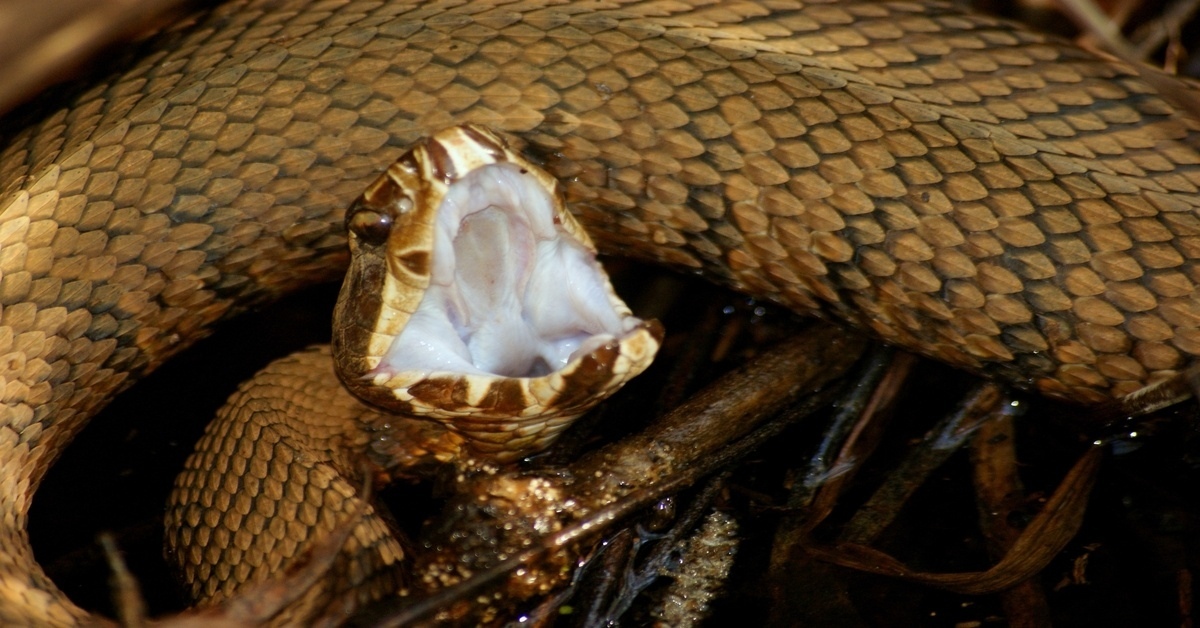
As the name suggests, moccasins are found around and in lakes, rivers, and southeastern states’ wetland areas. They usually grow to around 50 to 55 inches long. Cottonmouths have a yellow tail and spot a brown or orange color pattern. The adults have nearly black, brown, or dark tan skin with brown or dark spots.
Coral Snakes
You will find them in marshy, sandy, or wooded regions of the Southern U.S. They have colored bands that look like those of the non‐venomous king snake, and sometimes people confuse these two snake types. To avoid exposure, the coral snake either burrows into the ground or hides in fallen leaves.
Rattlesnakes
Rattlesnakes are the commonest venomous snakes in the United States. There are many species of these snakes spread all over the country. When coiled or stretched, rattlesnakes can strike a third or more of their body length from any position.
When threatened, rattlesnakes will use their “rattles” as a warning. A way to tell you, “Do not come closer!” Keep in mind that they can strike without rattling, so don’t assume they’re cool when they’re not rattling. Depending on the species, rattlesnakes can be anywhere between one and eight feet. Their skins have a light background patterned with hexagons, rhombuses, or dark diamonds.
Perhaps a rattlesnake’s most distinctive feature is the rattle, the other being the triangular head. Juveniles have no rattles, but they’re just as dangerous as the adults. These pit vipers are known to hibernate in their dens in caves during winter. They normally leave their dens to bask in the sun in open areas.
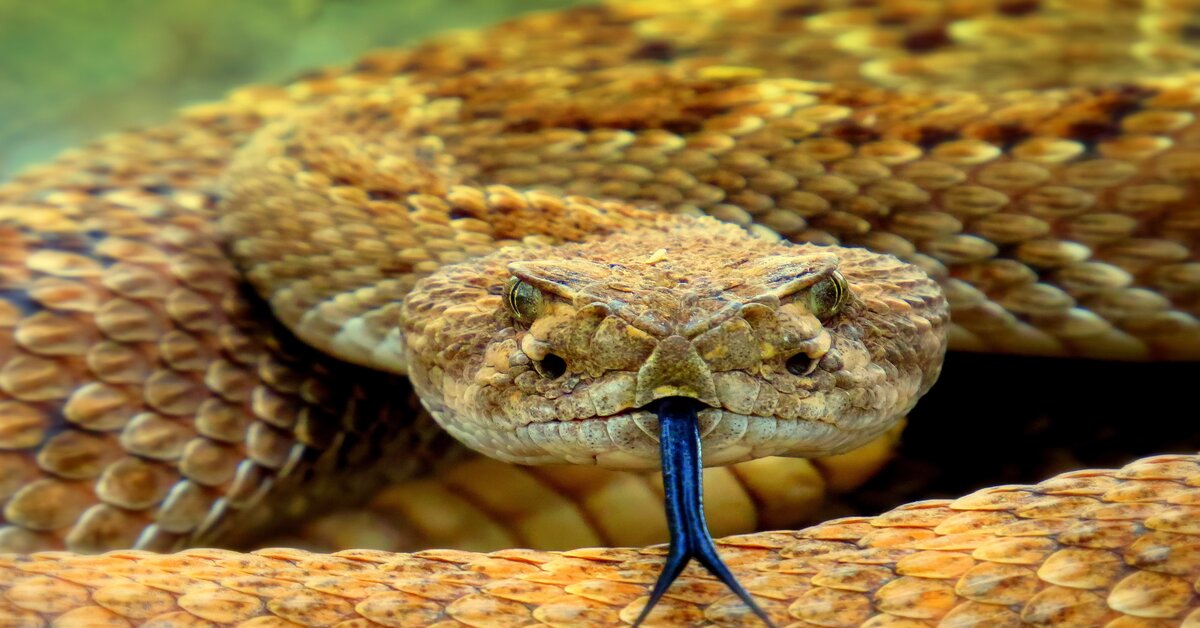
Statistics show that most people who are bitten by rattlesnakes accidentally step on them. So it’s vital that you keep your eyes on the trail when hiking. Rattlesnake venom is quite potent, but this does not mean you’ll drop dead a few minutes after the poison gets into your body. Antivenom is effective in the treatment of these snakes’ bites.
Copperheads
Mostly found in the Eastern states, copperheads have a golden tan or reddish color, and the colored bands on their skins resemble an hourglass. Between their nostril and each eye is a deep facial pit. Copperheads can grow to be one and a half to three feet or 18 to 36 inches.
These snakes are usually peaceful but freeze when there’s an intruder and will strike if you get too close or touch them. They live near water sources like lakes, swamps, rocky areas, or forests. Seek immediate medical help if bitten by a copperhead.
How To Avoid Snakes When Hiking
Occasionally, you will come across a snake on a trail. But they shouldn’t stop you from enjoying the benefits of hiking. Come to think of it; snakes are more afraid of us than we are of them. You will rarely find them in human territory.
They try as much as possible to avoid humans. Parks and jungles have bushes, rocks, and many other places where they can hide and hunt. So on a trail, you’re actually in snake territory! Remember, most snakes use camouflage to hide from predators and to remain undetected by prey. Chances are they’ll look like their environment, so you need to be keen enough to spot them before you are too close.
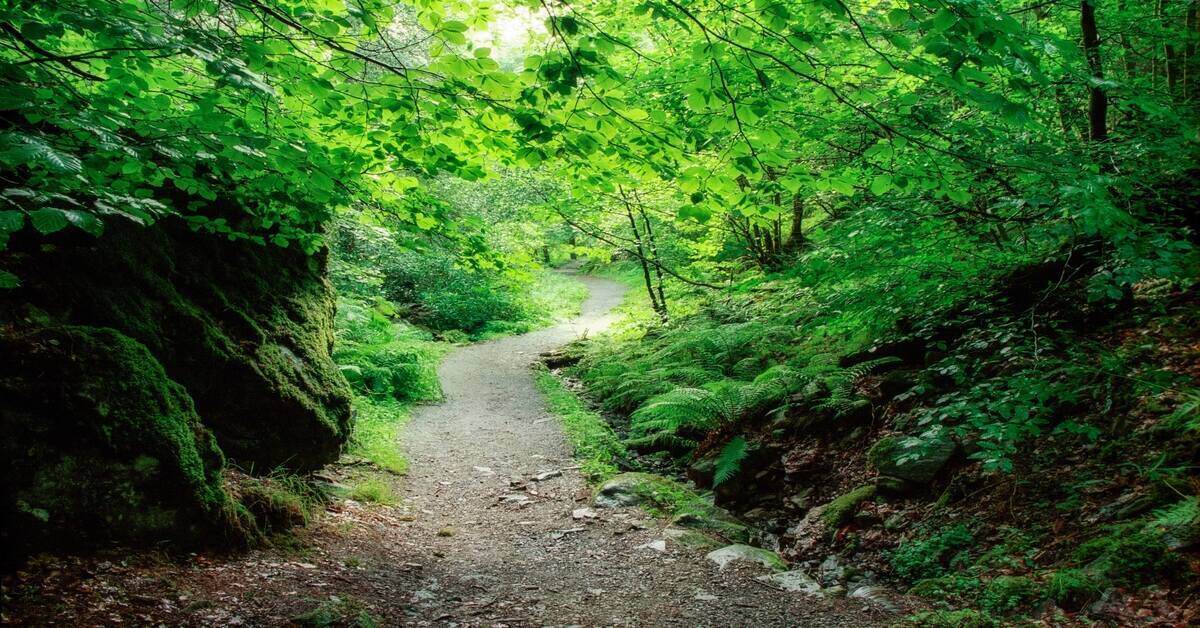
Here’s what you should do when you encounter a snake while hiking.
Give The Reptile Space
This is the first thing you should do when you encounter a snake, no matter how intimidating it looks. Can you imagine someone wandering into your property? To make it worse, they come closer to inspect or touch things in your home. You will either confront them or call the authorities, right?
It’s the same thing with snakes. You’re in their territory, and you look bigger than them, so they’ll view you as a threat if you try to make contact or move too close to them. We saw from the statistics that some snakes can strike half or a third of their length, so it’s important to stay far. Wait till the snake moves away to continue with your hike and if the path is big enough, go around it.
Like many animals, some snakes play dead when they see a threat. Many animals also use this tactic when prey is around. The prey will think the animal is dead, and when it comes inspecting, it gets attacked. So, do not get close to a snake if it looks dead.
Note that some freshly killed snakes are still able to strike (due to reflex action). And the dead snake can inject venom, so the wisest thing to do is keep away from the snakes, dead or alive!
Do Not Walk Alone In The Jungle
Hiking in the backcountry alone isn’t the best idea. You don’t know what snake species are in the region, and in most cases, you will be unable to identify them or tell which areas they’re likely to be found.
If you have to hike alone, find out about the snake species in that area from the park authorities or rangers. Ask about their features, habits, and where you are most likely to find them.
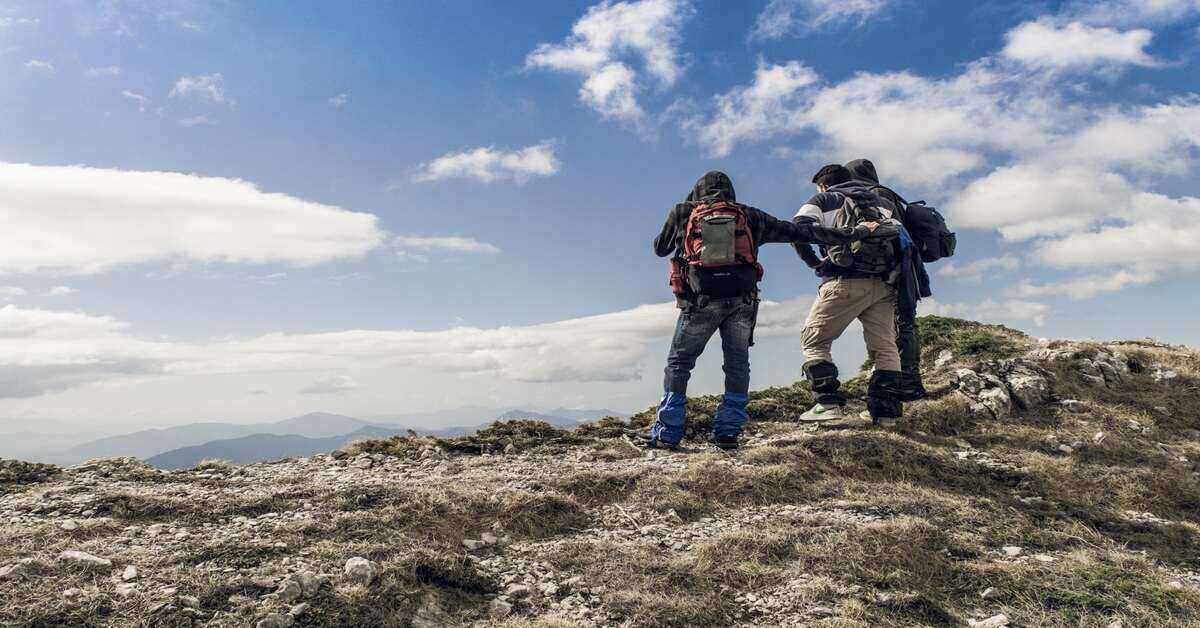
But I recommend getting a hiking partner or better yet, a guide who understands the area. When you have company, it is easier to identify a snake even if it is camouflaged.
Stick To The Trail
Try not to be too adventurous when on a hike. Snakes don’t like being in open places, especially where humans or other creatures frequently pass. The dense undergrowth, rocks, and bushes allow them to hide from predators and catch prey easily.
So when you stray off the path, you may stumble upon a hiding rattlesnake. Sometimes you won’t even see them, and it will be too late to avoid its fangs. Follow the trail to prevent such encounters.
Keep Your Children And Pets Away from Snakes
When most young kids see snakes, they’ll want to touch or pick them up. And they might do this while you are looking elsewhere. Always be on the watch out and restrain them when you see them moving towards a snake. Also, educate your children on the dangers of snake bites.
Same thing for pets. If you are hiking with a dog, have it on a leash. A dog might spot the reptile first because of its strong senses.
It will attack the snake or try to get a closer look out of curiosity. Remember, a snake’s venom is equally dangerous to a dog. Before going on a hike with your dog, ask about vaccines and antivenin for your dog. If a snake bites your furry friend, contact a veterinarian pronto.
Put On Long Pants And Boots
Wearing open shoes in an area with dense undergrowth is risky since you never know what you’re stepping on. To ensure you’re protected, wear long pants, long socks, and top-quality hiking boots. With hiking boots, for instance, the fangs will probably not reach your feet when a snake bites your foot.

Check For Hidden Snakes
Many snakes use camouflage to remain undetected. And no, they don’t do it to bite humans. They do this to avoid being seen by predators and prey.
When hiking or camping, always remember that snakes can hide under rocks, dried leaves, sand, or tall grass. If you are collecting firewood for your campfire, for example, make sure you’re on the lookout for hidden snakes. Be extra keen when picking wood, rocks, or anything from the ground.
How Do I Know If A Snake has bitten me?
You will be sure about it if you saw the snake strike you. But what if the snake bit you and slithered away without being seen? The first thing two look for is two fang marks in the area you felt the “bite.” Next, check for skin discoloration (caused by the venom), pain, and swelling in that area.
Other symptoms include dizziness, shock, slurred speech, nausea, sweating, and vomiting. If you or a colleague has these signs, then it is indeed a snake bite.
What To Do If A Snake Bites You On The Trail
If you are bitten by a snake while hiking, here are some things you should do:
-
DO NOT panic
The snake bite will surprise you. It can happen accidentally or when you are trying to kill the snake. It will be fast. Most snakes won’t escape after biting you. Do not try to attack the snake but try to move a few feet away from it and keep calm.
If you stay calm and move away, the snake won’t strike again. Also, do not run away as you may trip, leading to further injury. If you have a phone or camera with you, take a picture of the snake to show to first responders. If you can’t take a photo, take note of features like size and color pattern.
-
Handling The Bitten Area
To prevent secondary infection in the wound area, wash it thoroughly with water and soap. Alternatively, you can wipe the area using alcohol or other antiseptic solutions.
Wrap the bite region with a bandage or place a constricting band over and under it. Ensure it’s not too tight and DO NOT make a tourniquet as this will restrict blood flow, damage the nerves, and may lead to amputation of the affected limb.
Another thing you should refrain from doing is sucking out the poison. This won’t help – you will only be transferring it to another part of your body. Do not take painkillers such as ibuprofen or aspirin as they thin the blood and do not cut open the wound area to remove the venom – it won’t work. Lastly, avoid applying heat or ice on the bite area.
-
Call For/Get Help Immediately
If a snake has bitten you, do not waste any time. Look for help immediately. If you have a phone, call first responders and tell them about your situation.
And what if no one is around to help? Do not panic. Keep walking, and you will soon find help. Drink water while at it to stay hydrated and strong. If you are going to hike in an area where you will experience network issues, always carry the Garmin InReach Mini 2. It’s a satellite communication device that you can use to send messages to your loved ones whenever lost or in distress. It also provides other lifesaving functions such as navigation and weather reports.
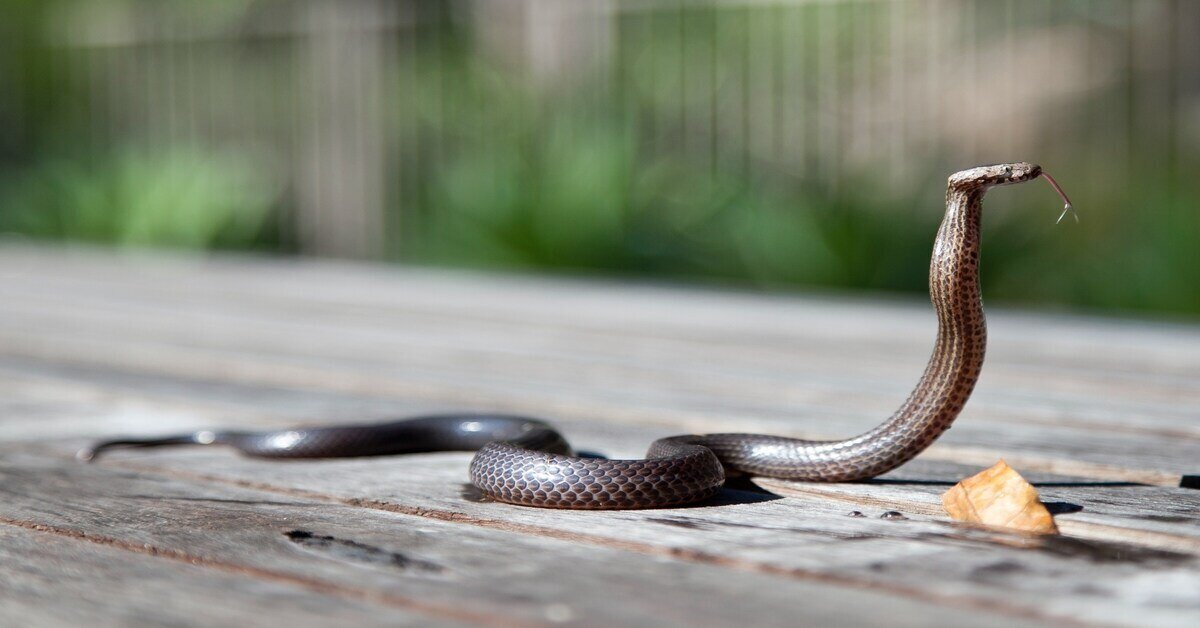
-
Further Measures
The bitten area of your body should be lower than your heart. If you were with a partner or friends and they have gone to seek help, find a secure place and rest. Be calm as a rapid heart rate increases the speed with which the poison flows through your bloodstream.
Remember that most snakes are nonvenomous, so the chances of getting bitten by venomous snakes are relatively low. And it would be best if you didn’t go straight home once you establish that the snake that bit you is not poisonous. You will still need to visit a doctor to get the wound cleaned and get a tetanus vaccine.
Some hospitals are not equipped to handle snake bites, so keep this in mind before heading out on a trail. Consult your doctor on snake bites and antivenom.
Conclusion
Snake bites aren’t as fatal as they seem. There are many snake species you will occasionally meet on the trail if you are an avid hiker. Try to avoid them as much as possible. If you spot them, take a picture (if you want to), wait for them to move, or go around them and be on your way.
I hope you have learned some tactics on how to avoid snakes while hiking. Have you ever encountered a snake on the trail? Which kind of snake was it? How was your experience? We’d like to hear all about it in the comments section.

